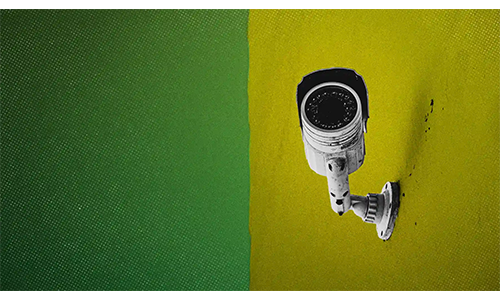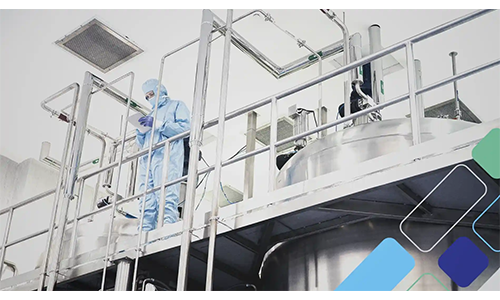In 2006, an OSHA gave Eli Lilly some good news.
An audit of the processing equipment across the company's global manufacturing works revealed what the report called "state of the art machine safeguarding."
That was a pleasant surprise for the company, to say the least. Until then, it turns out, no one at Eli Lilly really know how safe their machines really were.
As Roy Christian – an HSE consultant at ELI Lilly – explained at the EHS Today Safety Leadership Conference last month, back then the company left the safety requirements for the OEMs to handle.
"We are end users," he explained. "We don't design the equipment; we purchase equipment to use. So we relied on the OEMs' safeguarding for the most part."
So when the OSHA report came out, it provided a little validation for that strategy. But with new regulations looming across the industry, it wasn't enough for the company.
The next year, Eli Lilly created an internal global risk assessment team to inspect and document the real state of safety in the company's existing equipment.
The results came in sharp contrast to the OSHA report.
"The common theme of the audits revealed that, while the machine safeguarding was not unsafe, it did not provide the level of protection to current industry standards," Christian said.
In fact, he added, "in 97% of the equipment in our business units, we found at least one activity [for which] operators required additional safeguarding."
In all, he said, less than half of fixed guards on packaging equipment were deemed adequate according to Eli Lilly standards and less than 50% of redundant interlocks met control safety conformance.
Looking at those numbers, Eli Lilly had a hard choice to make: either it could trust the OSHA report and continue its standard operating procedures as before, or it could invest the time and money into fixing problems only it could see.
That was a tougher choice than it appears.
Eli Lilly already had a strong safety culture, explained Bryan Harrell, an automation engineer consultant at Eli Lilly, who co-presented with Christian.
"When we were deicing what to do next, we couldn't look at [time-lost] injuries and say we had to do something. There weren't any," he said. "Instead, I told my senior management that the standards were changing, that we didn't understand what our risk or liability really was.
"I told them we needed to invest some effort, time and money into upgrading our equipment," he said. And that's exactly what they did.
Designing for Safety
What resulted was a two-prong approach to machine safety: 1. Working with OEM's to develop new orders to ensure compliance with Eli Lilly standards, and 2. Upgrading legacy equipment to incorporate those standards into production without affecting productivity.
Engineering Safety
The first issue the company had to deal with in their conversations with OEMs was their definition of "acceptable risk," Harrell explained.
"Certain OEMS don't believe any injury is serious unless it results in amputation or death," he explained. "But [Eli] Lilly considers it serious long before we kill or dismember one of our employees."
Clearing up that misalignment, he said, was the first step to bringing safer equipment into the factory.
The trick is to open this dialog early in the buying process, long before POs have been signed or any metal has been cut.
"You want to meet with the OEMs during the conception and design phase of the project," he said. "Before they start building the machine, before they start buying components, we're establishing what the architecture needs to be."
Minus some political maneuvering required in this step to avoid insinuating that the OEMs make unsafe products, Harrell said, addressing the issue at that early point in the deal was relatively easy.
"The OEMs we've dealt with have had no problem making the changes we've asked for," he said. "We're not asking them to compromise their designs, just to ensure that when we take custody of their equipment, it's up to our safety standards. They all support that."
Legacy Challenge
With hundreds of pieces of equipment across its manufacturing works, the process of bringing Eli Lilly's existing tools up to standard could have taken years and decades to roll out. But to make the project work – and valuable to upper management – the engineering teams couldn't let the project drag on for too long. They had to show results and they had to show them fast.
According to Harrell, that project met two major barriers:
1. ROI: "When we started down the journey on legacy senior management asked us what they would get for the money," Harrell said. "Well, you don't get any faster throughput; you don't get any lower operating costs; to some extent you just get the right to remain in business.
"That's a difficult conversation to have."
Difficult, maybe, but it was urgent enough for the company to earn a small budget those first few years, which gradually grew as the project picked up momentum.
2. Competency: "Once we got started, we figured out pretty fast that we didn't have either the skillset or the competency in our engineering group to tackle this project," Harrell said. "We had an engineering staff that was curious enough to invest the time to learn what it takes to get their equipment to standards, but we needed someone to partner with to get us over the hump."
The answer, he said, was finding a partner in t industry—someone who would work within Eli Lilly's culture to meet its business needs while assessing the state of its equipment.
"We couldn't drag this out over a number of years,' he said. He had to show progress if we were going to continue funding. We just needed someone to get us over the hump."
Results
At the end of the process, Harrell said Eli Lilly saw all of the natural consequences of a safety makeover – the machines were all in compliance and they had enough documentation to carry the program into the future.
But there were also some unintended results that came along with it.
"We expected to achieve compliance, but what we didn't expect was a higher moral in our operations group," Harrell said. "We had to engage our operators and personnel just to understand how they interacted with the equipment and we expected them to kind of scumbag the engineering department because we were making things more difficult for them. But that wasn't the case at all."
Rather, the operators helped the engineers identify and resolve their pain points and irritations with the equipment along with safety issues they had encountered while using the machines.
As a result, he said, "we had higher moral, increased productivity and a better relationship between engineering and operators. You couldn't ask for anything better."















































































